This post may contain affiliate links which help support Girls Can Grill.
Steak lovers unite! This grilled picanha steak recipe is a delicious new favorite that you won’t want to miss. Indulge in the succulent flavors of perfect, juicy cut of beef, expertly seasoned and cooked to perfection.
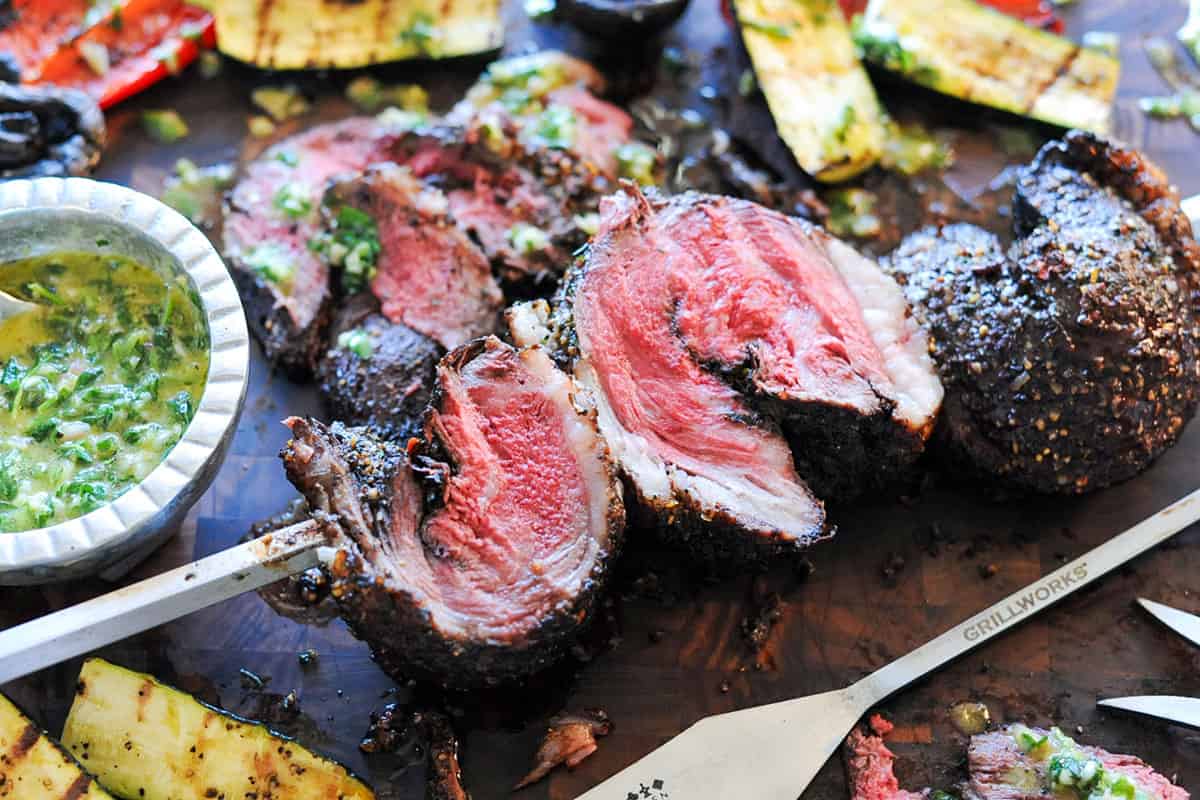
Save this BBQ Tip
Enter your email, and I’ll send this link directly to your inbox. Plus, you’ll get new BBQ recipes and tips weekly.
Table of Contents
What is grilled picanha steak?
Picanha is a prized cut of meat in Brazil and comes from the beef loin primal and top sirloin subprimal, which is located just above the tail on the top of the rump cap.
The texture is similar to a filet mignon with an awesome crust and a little cap of seared fat that adds a butteriness that you don’t get with filet.
It is a popular cut, also often referred to as a coulette steak or sirloin cap by some American butchers.
If you have a good local butcher shop, tell them you are looking for cut number 184D or ask if they have any tips for sourcing Brazilian picanha steak.
You can also purchase picanha online through sources like Snake River Farms.
PRO TIP: Assuming you don’t live in Brazil, finding and buying picanha can be a little tricky if you live in the United States. I’ve known people who are lucky enough to get it at their Costco, so it’s worth checking there.
Tips from South American pitmasters
Many Americans know the Texas Di Brazil way of cooking picanha. It involves cutting the beef into thick steaks, putting the steaks on a skewer, and cooking them on a rotisserie. This is what is commonly found at Brazilian steakhouses.
Before developing this recipe and cooking my first picanha, I reached out to my friends from South America to get some pointers.
Tips from The Churrasdelas
The Churrasdelas live in Brazil and have a great tutorial on picanha. Their video is in Portuguese, but you can turn on the English closed captions to get the gist of it.
It turns out Brazilians debate over whether to cook picanha fat side up or down. We have the same debate about brisket in the U.S.
Joana and Aline believe that heating up cooking fat can make it drip onto the meat to add flavor. But they prefer to cook it fat down, so the fat protects the meat. (That’s the exact same reason I cook my brisket fat down)
If you cook fatty food, the fat will drip onto the grill and cause flareups that can burn the meat. If you cook it fat down, the flareups will hit the fat, which is fine.
The Churrasdelas score the fat before placing it on the grill, so the fat melts through and you don’t end up with any uncooked pieces of fat. Then, they grill it for 3-5 minutes fat down, and then flip it and cook it for another 3-4 minutes.
After both sides get a decent sear, they slice it to two-finger thick sections with the grain. They put the slices back on the grill over high heat and grill them like steaks.
They know it’s time to flip the steak when the meat “cries” or when the juices rise to the top. After another quick sear, they continue cooking the steaks over medium heat to medium-rare, about 15 minutes.
Then and only then, they season the slices with salt and pepper.
Tips from Carla Di Lorenzo
My friend Carla Di Lorenzo of @chetanitamiami is from Argentina and has a slightly different method. She, too, starts by cooking it whole and placing the fat side down on the grill, but she doesn’t score the fat.
And instead of cooking hot-and-fast unseasoned, she sprinkles it with rock salt and cooks it slow-and-low for about 35 minutes. She recommends keeping an eye on it because flareups can happen.
After the flip, she cooks it for another 15-20 minutes to medium rare.
Ingredients
- Picanha sirloin cap: Ask your local butcher for picanha or coulotte steak.
- Beef Rub: Any rub that goes well with beef will work.
- Gaucho Steak Seasoning: This rub combines South American flavors, including a hint of garlic, peppercorn and salt as well as the addition of dried vegetables.
- Flake sea salt: Adding a sprinkle of salt after it’s cooked will help subtly elevate the flavors of the steak.
Substitutions: Instead of using the signature rubs highlighted above, you can also use coarse salt like kosher salt or sea salt, coarse-ground black pepper and granulated garlic or garlic powder.
See the full recipe card below for servings and a full list of ingredients.
How to cook grilled picanha steak
With everything I’ve learned from my friends and my experimenting, I have developed the below picanha recipe that delivers a memorable meal of beef that will melt in your mouth.
In South America, picanha is often cooked on metal skewers. As an alternative, this recipe is cooked in two stages, using the grill grate and the rotisserie feature of my grill.
If you don’t have a rotisserie, you can finish the steaks over indirect heat on the grill grates instead.
- STEP ONE: Using a sharp knife, trim the silver skin on the picanha cut and heat your charcoal grill or gas grill to medium-high heat (350-375F).
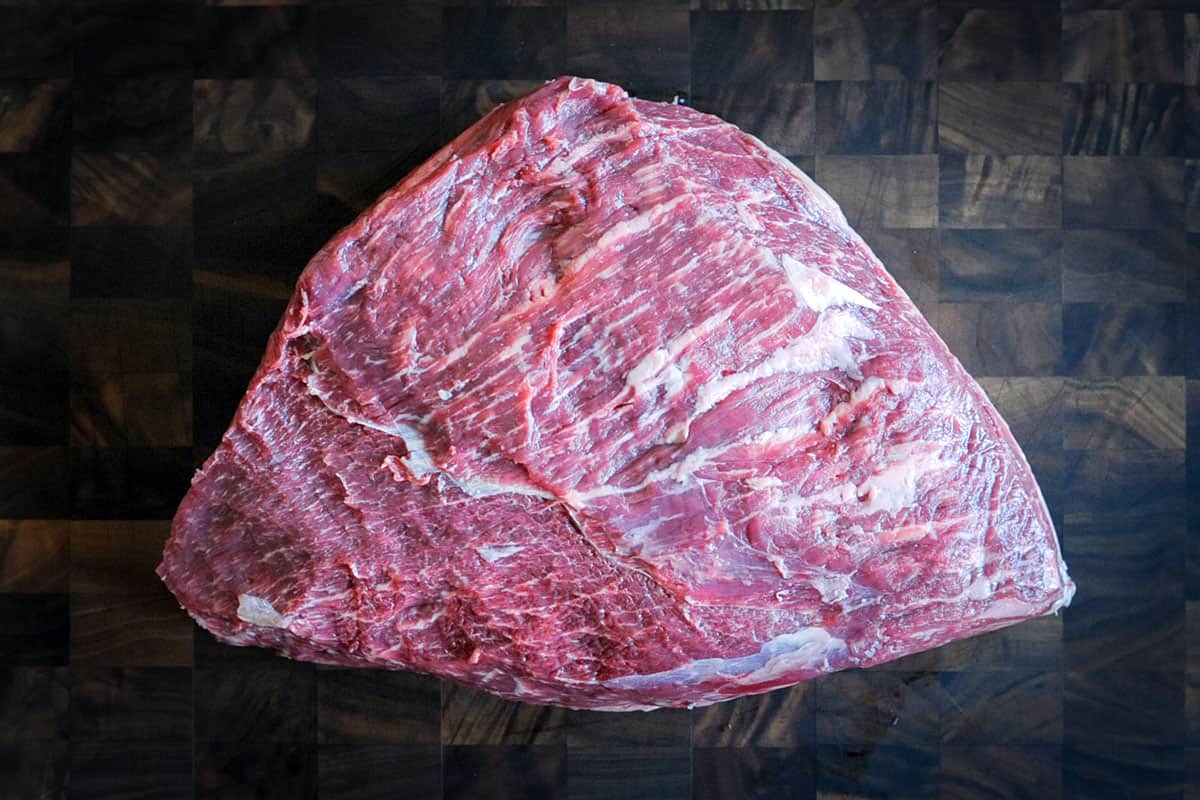
- STEP TWO: Lightly season the picanha on all sides with Brisket Rub or your favorite beef seasoning.
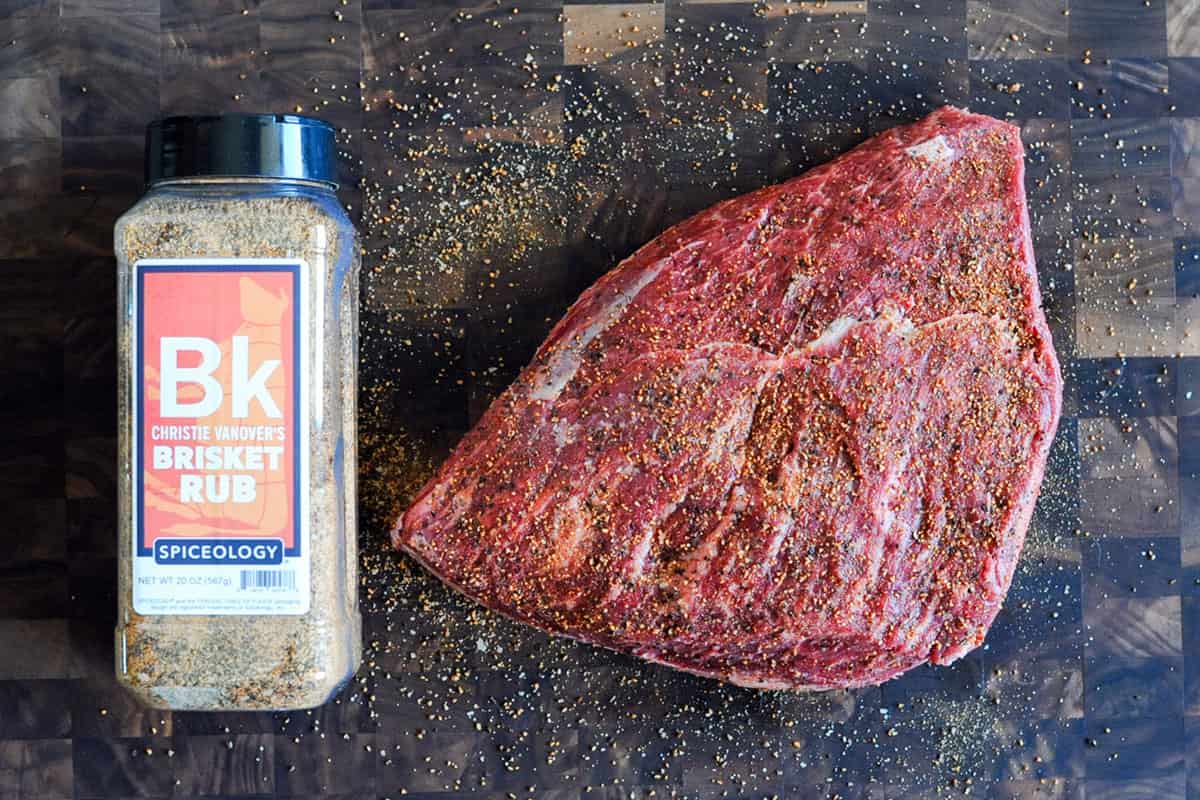
PRO TIP: In South America, picanha is often just seasoned with rock salt. Rock salt is surprisingly hard to find in the U.S. If you google it, you’ll find ice cream salt. Don’t use that. It’s not food safe.
- STEP THREE: Place the whole picanha on the grill fat side down. Grill it for 3-4 minutes to sear the fat, moving it around the grill if you have flareups. Flip it and grill for another 3-4 minutes just to form a crust.
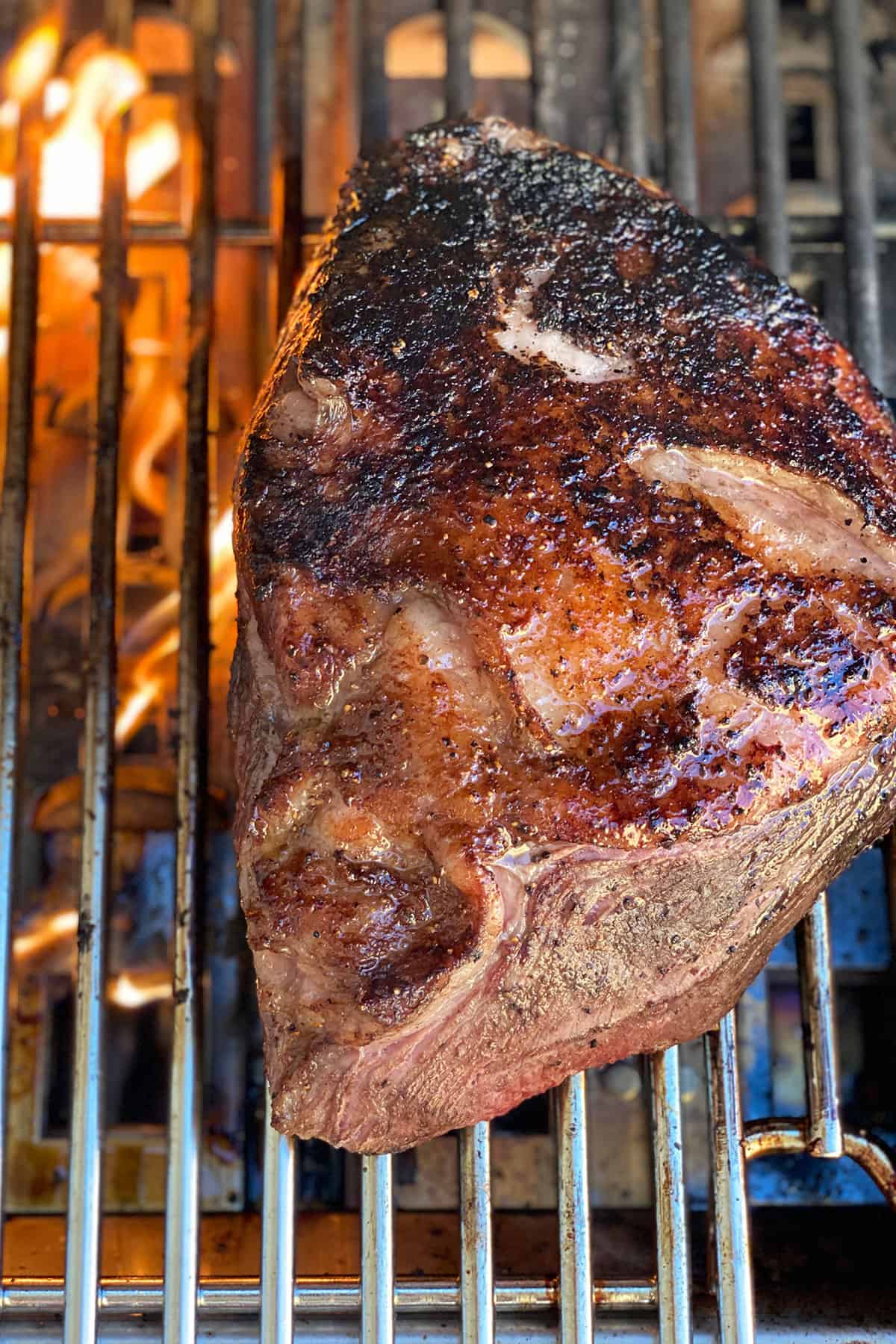
- STEP FOUR: Remove from the grill. Slice with the grain into three 2-inch thick steaks.
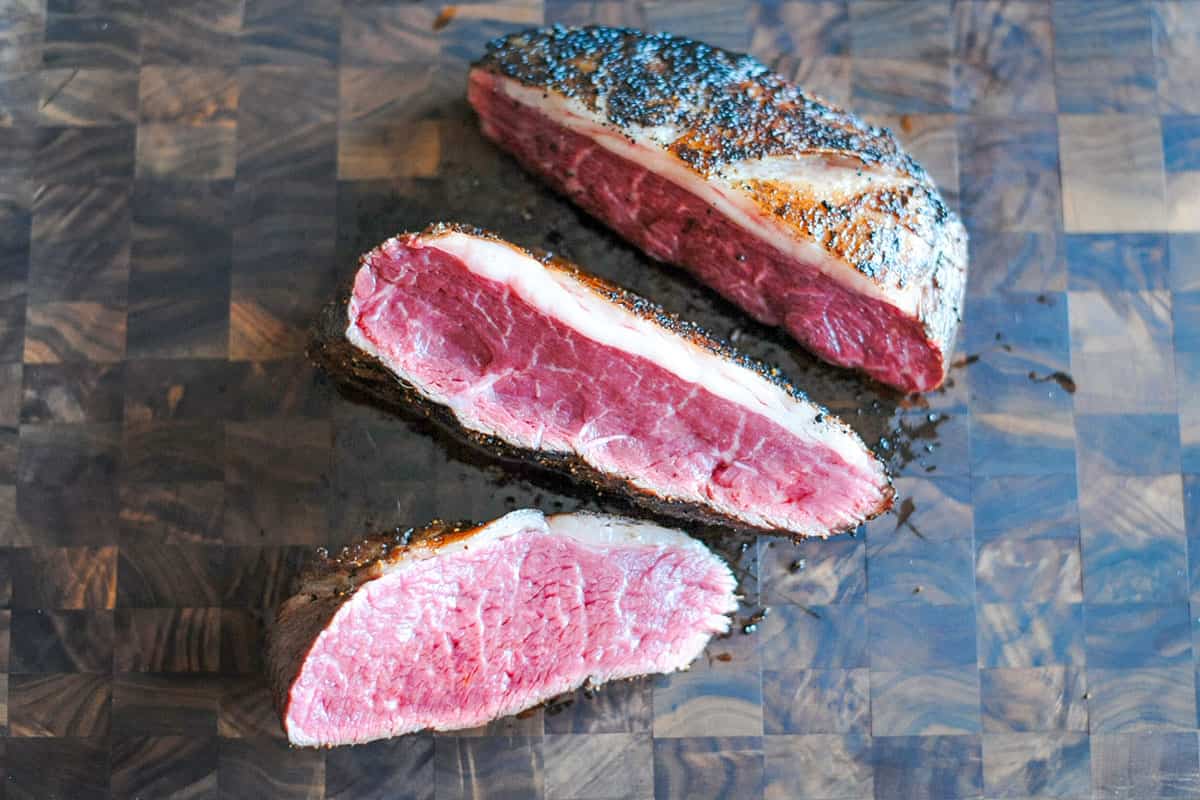
- STEP FIVE: Prepare the grill for rotisserie cooking with medium-high heat (350-375F). Bend each steak into a C-shape and thread them onto a rotisserie spit. Sprinkle both sides with the Gaucho Steak Seasoning or sea salt and black pepper.
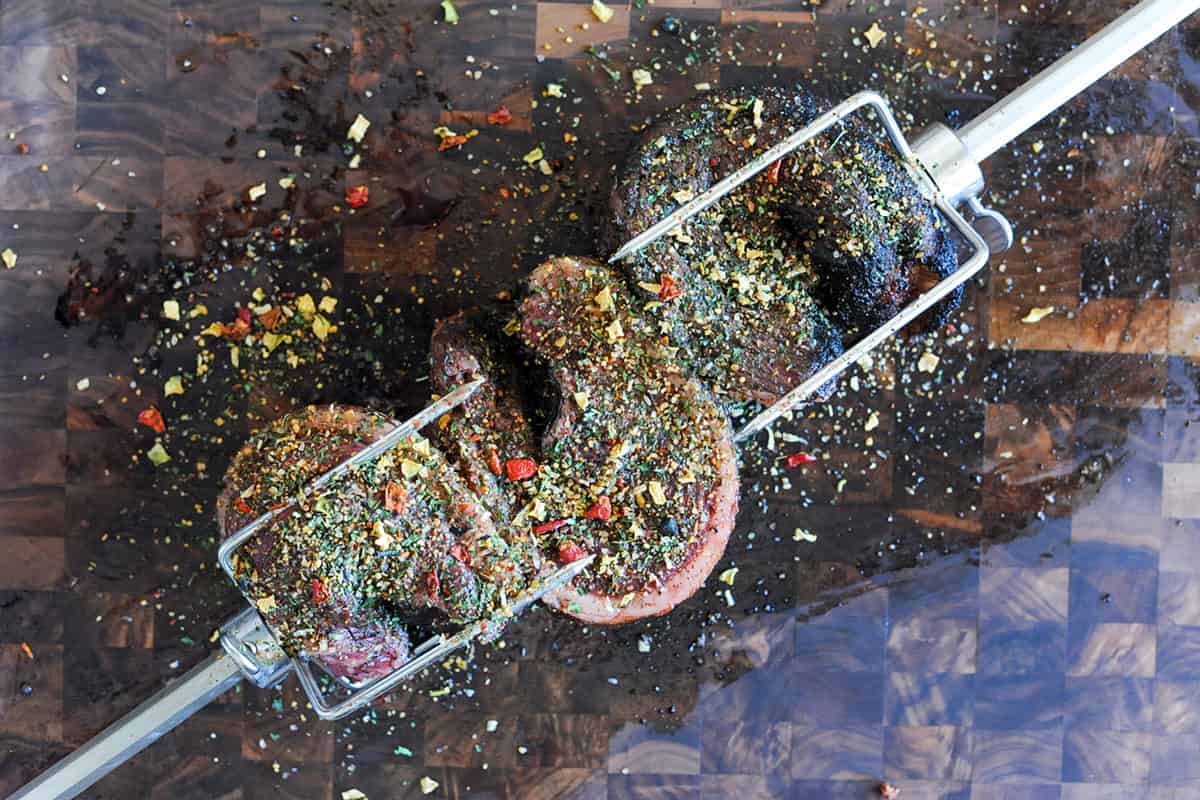
PRO TIP: If you don't have a rotisserie grill, cook the steaks individually over indirect heat.
- STEP SIX: Grill on the rotisserie until the internal temperature reaches 130F degrees on your digital meat thermometer (about 30-40 minutes). Cooking times may vary here depending on how hot your grill is.
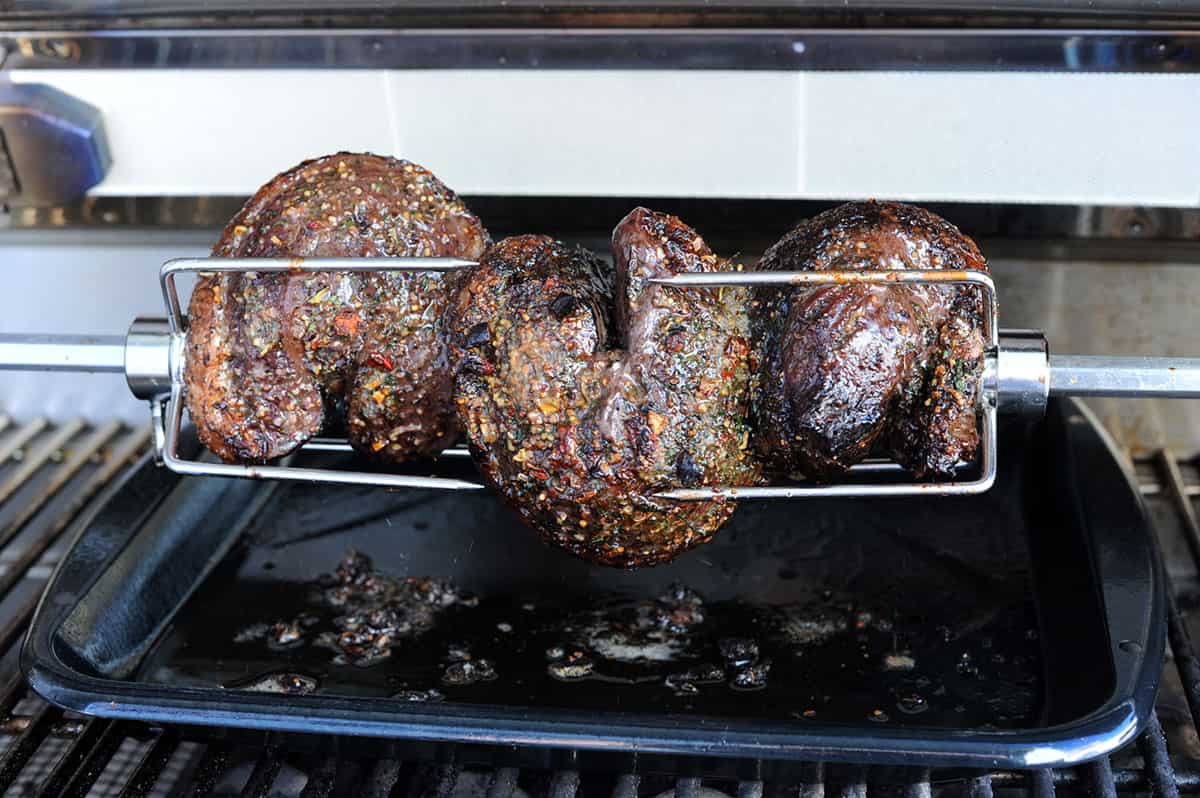
How to serve picanha
Once you let the steak rest about 10 minutes, you will want to remove it from the spit and slice it against the grain. Or you can slice it straight off the spit like at a Brazillian steakhouse.
Season the slices with flake sea salt.
I love to serve this with a light side, such as grilled zucchini, grilled peppers or a simple side salad. It’s also really great served with some chimichurri sauce and a piece of cheese bread.

Storage
If you have extra steak, put it in a sealed container and keep it in the fridge for 2 days.
The next time you eat it, you’ll want to heat up the individual steaks on a hot grill for best results.
GCG Pro Pitmaster Tips
- It’s very important to slice against the grain when cutting your steak
- Make sure you let the steak rest – this will ensure a tender texture for this Brazilian steakhouse speciality
- Thin slices of this steak are just one of the different ways you can cut this delicious steak
Frequently Asked Questions
Picanha steak is beef cut from the biceps femoris muscle. Its butcher identification number is 184D. In addition to picanha, butchers may refer to it as coulotte steak, rump cover, sirloin cap, sirloin top butt steak, rump cap or sirloin strip.
Finding and buying picanha can be a little tricky if you live in the United States. Some Costco stores have been known to carry it. You can also source it online at Snake River Farms or Porter Road.
When cutting any steak, it’s important to slice it against the grain. If you follow this recipe and slice it properly, your steak should be tender and juicy. If you cook the steak too long, you do run the risk of it being less tender.
Correcting the Record
It’s wrong to call a picanha a culotte steak
- The proper spelling is coulotte.
- A culotte is a pair of trousers or shorts that look like a skirt.
What to Serve with grilled picanha steak
More delicious grilled steak recipes
Want even more great grilling recipes and tips? Subscribe to my newsletter and follow me on Facebook, Instagram and TikTok for my latest grilling adventures. If you make a recipe, please leave a comment and rating below.
Save this BBQ Tip
Enter your email, and I’ll send this link directly to your inbox. Plus, you’ll get new BBQ recipes and tips weekly.
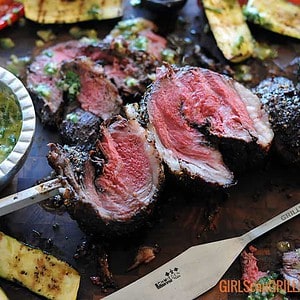
Rotisserie Grilled Picanha
Ingredients
- 1 picanha sirloin cap
- 1 tsp Christie Vanover's Brisket Rub
- 1 tsp Gaucho Steak Seasoning
- 1/2 tsp flake sea salt
Instructions
- Heat grill: Heat the grill to medium-high heat (350-375F) with a direct heat zone.
- Trim and Season: Trim the silver skin from the meat side of the sirloin cap. Lightly season the picanha on all sides with Brisket Rub or salt and pepper.
- Sear: Place the whole picanha on the grill fat side down. Grill for 3-4 minutes to sear, moving it around if you have flareups. Flip. Grill meat side down for another 3-4 minutes.
- Slice: Remove from the grill. Slice with the grain into three 2-inch thick steaks.
- Adjust Grill: Prepare the grill for rotisserie cooking with medium-high heat.*
- Skewer: Bend each steak into a C-shape and thread onto a rotisserie spit.
- Season: Sprinkle both sides with the Gaucho Steak Seasoning or sea salt.
- Grill: Grill on the rotisserie until the internal temperature reaches 130F degrees. It should take 30-40 minutes, depending on your grill.
- Rest: Let rest 10 minutes. Remove from the spit and slice against the grain. Season with flake sea salt.
Notes
Nutrition
Nutrition information is automatically calculated, so should only be used as an approximation.
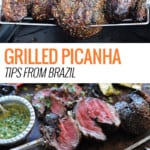
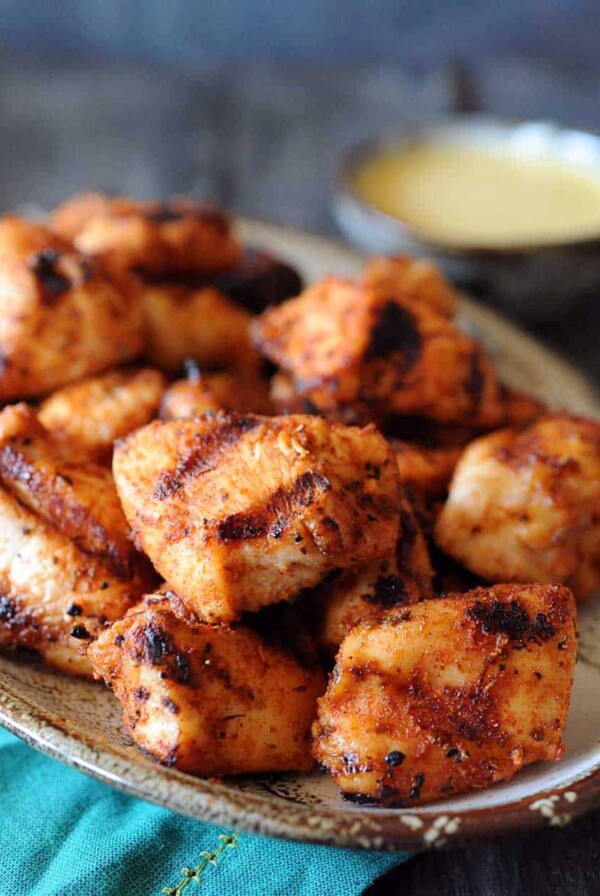

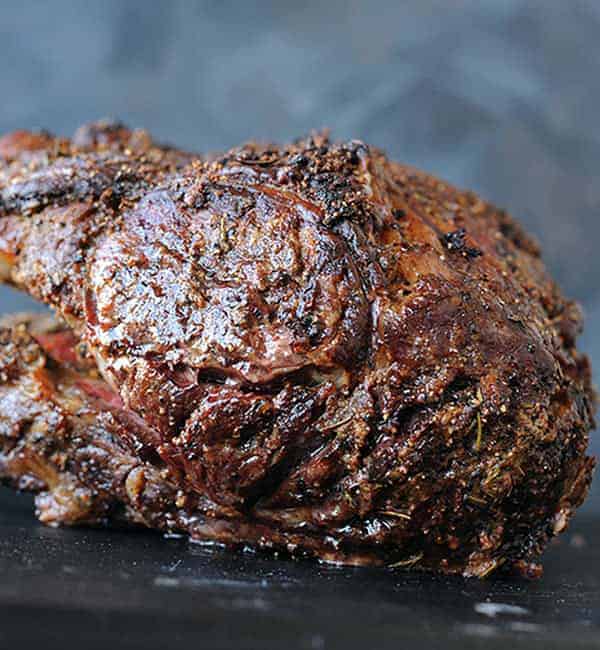
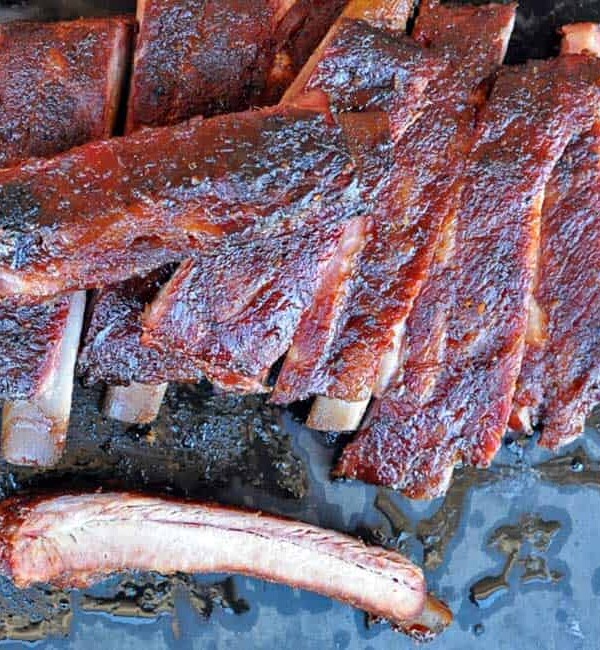
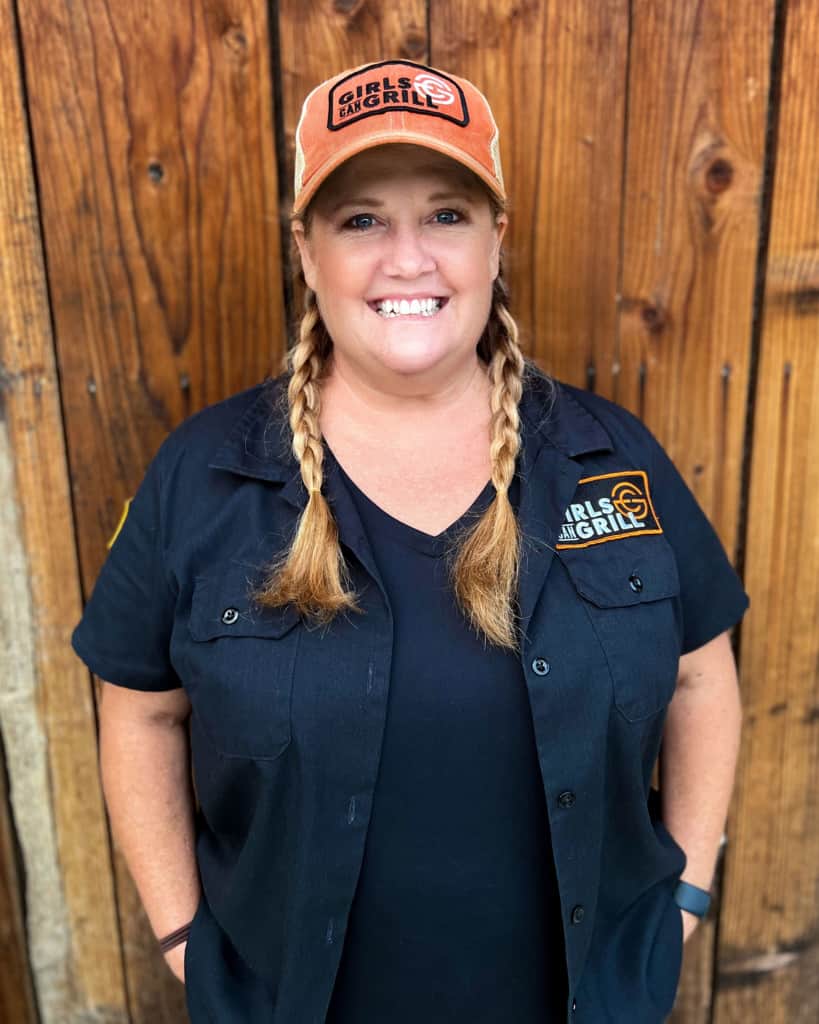








Hey just wanted to take the time to say THANK YOU for the in-depth article. Going to give this a try tonight! I really enjoyed the fat-side down and fat-scoring tips from your article.
Cheers,
David